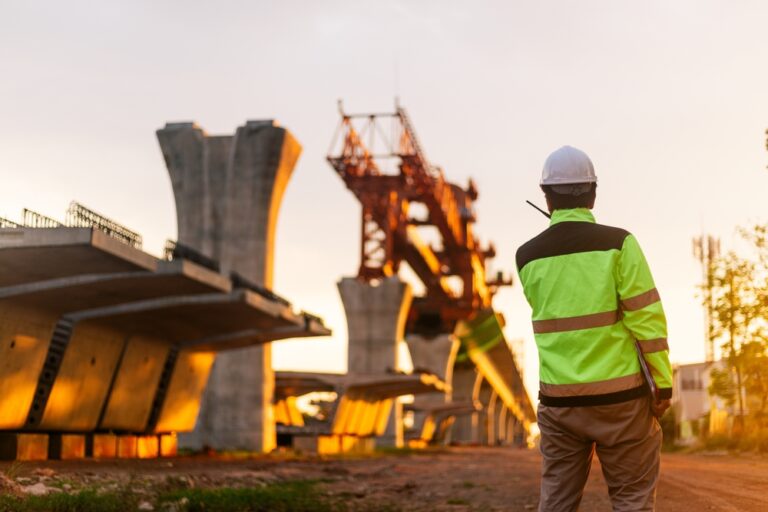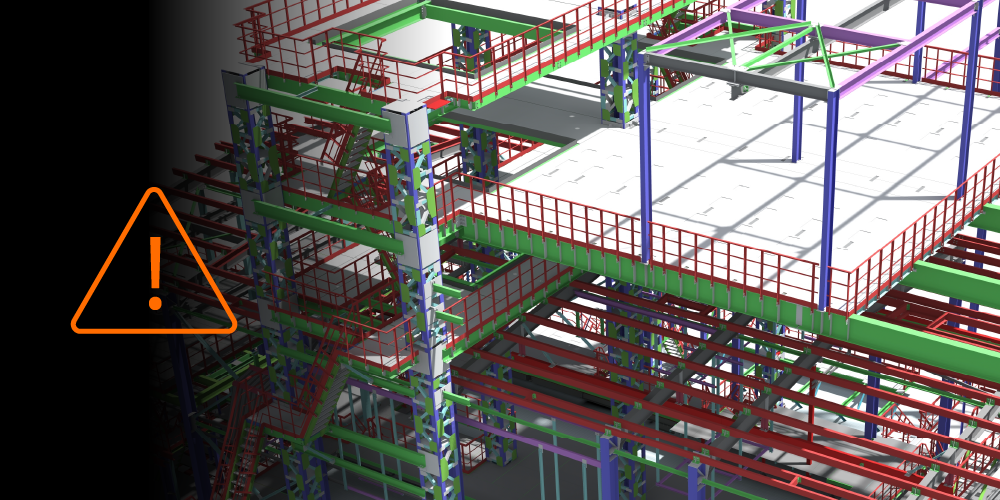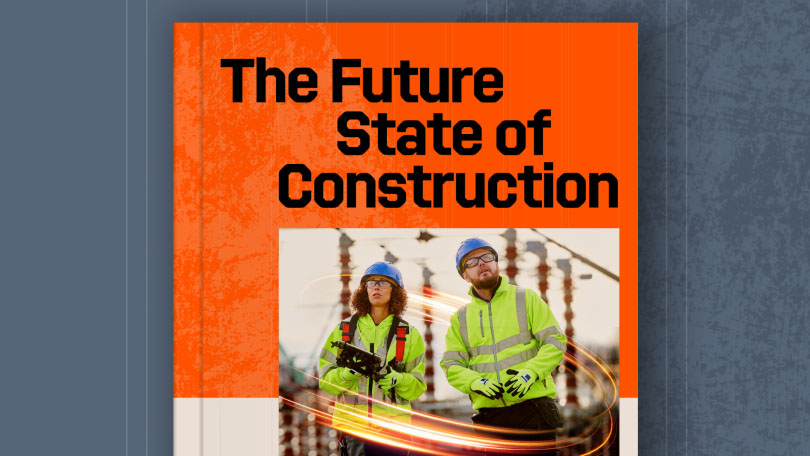Related Articles
— 5 min read
Are We Defining Productivity Properly in Civil Construction?

Last Updated Sep 29, 2025

Annabel Davis
Before joining the world of construction technology, Annabel worked as a Project Engineer across major infrastructure projects in Australia, New Zealand, and the UK. Her experience on site—often drive-in-drive-out or fly-in-fly-out—spanned large-scale rail, road, and marine works. Annabel holds a BEng (Civil, Structural) and BCom (Economics) from USYD and brings her practical, hands-on knowledge to her role at Procore, where she has been since 2021. This move was driven by a deep appreciation for the construction community and a desire to leverage engineering expertise in a less transient role, while remaining connected to the industry.
Last Updated Sep 29, 2025

The recent report released by the Productivity Commission on the construction industry argues that the sector must improve productivity as part of a broader effort to resolve affordability issues. But how the Commission defines productivity — essentially, the ratio of outputs to inputs — may not tell the whole story.
In civil infrastructure especially, where projects are complex, multi-year, and high-risk, productivity can’t simply be reduced to how much gets built for how much money and labour. The picture is more nuanced. Projects such as roads, rail, bridges, water pipelines, wharves, levee banks, irrigation networks and energy transmission lines are not marketed to buyers. They remain publicly owned or are managed by large enterprises with long-term operational stakes.
It is also harder to correlate outputs and inputs, as project dimensions in infrastructure may not reflect the complexity of the engineering design, materials specifications, machinery used, and labour effort involved. So simply basing our picture of productivity on rations of inputs and outputs may not be the best approach.
Table of contents
Beyond Speed: Getting It Right the First Time
Basing our thinking about productivity on how rapidly works are completed – a time-based calculation – may also be problematic. It is fair to expect a project to meet its milestones and program timeframes. However, if the client has pushed for an unrealistic timeframe that does not account for contingencies such as extreme weather events, equipment failures, variations, or challenges obtaining materials or labour, project managers will struggle to satisfy both the client and the needs of the project.
It’s not just about how fast something gets done. If it’s done wrong, and you’ve got to redo it, that’s not productive. True productivity is doing it right the first time.

Annabel Davis
Ensuring the quality and the accuracy of works means investing in planning up front, developing appropriate systems and checks for the quality of work, and ensuring timeframes are adequate to deliver work at the appropriate level. For infrastructure this is particularly crucial, as there may be lives riding on the result of the works.
As a civil engineer, I worked on projects including rail, and the accuracy required for both the grade of the fall from the line and the grades of the ballast used for the rails and embankment was critical to prevent future accidents. I needed to ensure each step was carried out properly, from initial design through to grading of materials, onsite works and quality inspections.
On any of these projects, if inspections find that there are quality, compliance or accuracy issues, rework is likely to be required, which means more labour hours, more materials and erosion of both project margins and program timeframes.
People talk about productivity like it’s only about speed, but accuracy and quality are just as important. If you compromise on those, you’re not really saving time or money in the long run.
Safety Cannot Be Compromised
Safety of teams working on major infrastructure also requires an investment of time and focus that cannot be short-changed in the interests of increasing productivity. When people are rushing, and feeling pressured, that’s when mistakes get made. At best, those mistakes might mean rework and additional spend on time and materials, at worst they can mean someone getting hurt.
If the pressure to be productive means cutting corners on safety, that’s not productivity—that’s just risk. Productivity has to include keeping people safe. It's fundamental not to increase levels of risk, whether that be safety risk, financial risk or reputational risk. Civil infrastructure projects already have a fairly high-risk profile, whether that’s due to the location, the complexity of the project or the scale of the machinery and materials involved.
Annabel Davis
Planning and implementing best practice project management is essential. For example, highway upgrade projects require the expert input of a traffic engineer to ensure that road diversions, traffic management and site safety are all managed exceptionally well. The cost of not allowing appropriate time for the traffic management planning, implementing protocols and installing safety culture on site is not only financial, it can put lives at risk.
Communication Under Pressure
Communication and coordination are one of the pain points for many major civil infrastructure projects. The cracks in the program really start to show quickly if design coordination has not been managed effectively. This can mean teams are operating on incomplete, inaccurate or outdated information and it definitely erodes productivity, and potentially time and cost margins as well.
The biggest pressure point I’ve seen is when designs are incomplete at the start of construction. That creates massive inefficiencies—people end up waiting around or redoing work that should’ve been right in the first place.
The Digital Advantage
One of the most useful things a head contractor, consultant or key subcontractor can do to deal with pressures around communications and coordination is implement a shared, digitised communications and project management solution.
Having visibility, accountability, and a shared source of truth generates efficiency in managing across the project team. It enables the implementation of checks and balances around design, delivery and completion inspections. It also ensures all the different moving parts, which may be spread over a significant geography and potentially time period as well can be tracked and coordinated more effectively.
Even simple things like moving from paper timesheets to digital saves hours of admin and gives you more accurate data. That’s real productivity—you’ve just freed up time for people to do higher value work.
Ultimately, civil contractors and their teams cannot control clients, material prices, regulations or the weather, but they can control how they capture, manage and share information. This can be a significant benefit for improving planning, scheduling, reporting, safety management and quality validation.
Redefining Productivity in Civil Construction
If we keep treating productivity in civil construction as little more than a measure of speed and cost, we’ll miss the bigger picture. Productivity should reflect how effectively we deliver projects that are safe, durable, and coordinated, that minimise rework, and that use digital tools to drive efficiency and accountability. In a sector where the outcomes are measured not just in dollars but in public value, safety, and resilience, that’s the only definition that makes sense.
Categories:
Written by

Annabel Davis
Before joining the world of construction technology, Annabel worked as a Project Engineer across major infrastructure projects in Australia, New Zealand, and the UK. Her experience on site—often drive-in-drive-out or fly-in-fly-out—spanned large-scale rail, road, and marine works. Annabel holds a BEng (Civil, Structural) and BCom (Economics) from USYD and brings her practical, hands-on knowledge to her role at Procore, where she has been since 2021. This move was driven by a deep appreciation for the construction community and a desire to leverage engineering expertise in a less transient role, while remaining connected to the industry.
View profileExplore more helpful resources

Managing Direct Costs in Construction: How Visibility Drives Profitability
Direct costs define the financial reality of every construction project. They cover the labour, materials, and equipment that drive delivery and determine profitability. But even the best-planned budgets can shift...

BIM Clash Detection: Reducing Rework, Delays, and Risk in Construction
Design clashes can be a significant hidden cost in construction, as each conflict between systems risks expensive rework, project delays, and reduced margins. BIM clash detection empowers teams to identify...

Next-Gen Job-Costing: Ready to Move? 5 Things to Consider Before You Get Started
In this three-part series, Quantity Surveyor turned Financial Solutions Specialist Clint Burgess uncovers the real-world gains for people, processes, and profits when businesses move from legacy to next-generation Enterprise Resource...

From Workarounds to Workflow: Solving Construction’s Legacy Job-Costing System Challenges with Next-Gen Tools
In this three-part series, Quantity Surveyor turned Financial Solutions Specialist Clint Burgess uncovers the real-world gains for people, processes, and profits when businesses move from legacy to next-generation Enterprise Resource...
